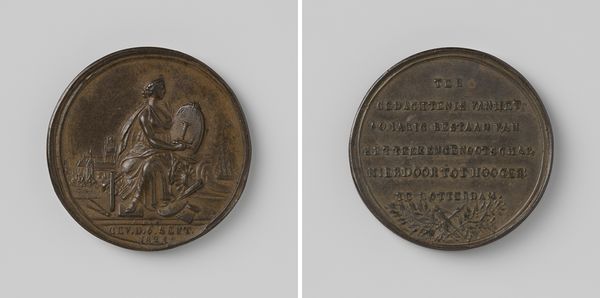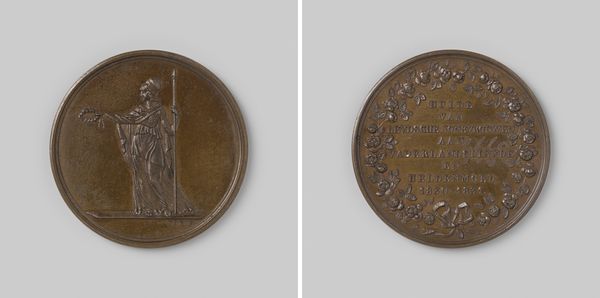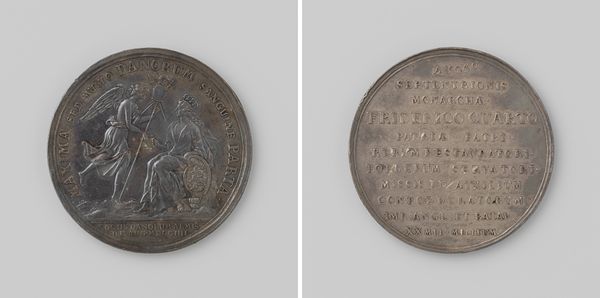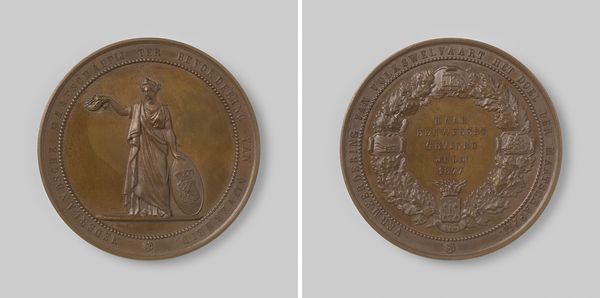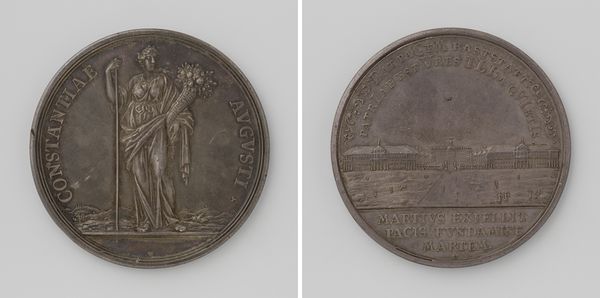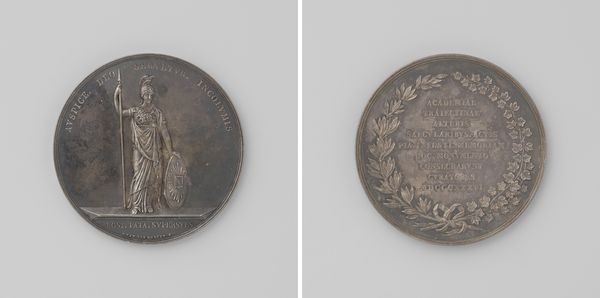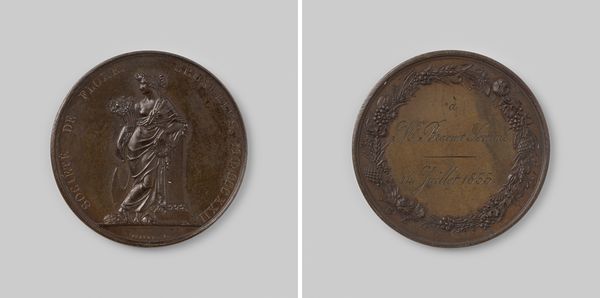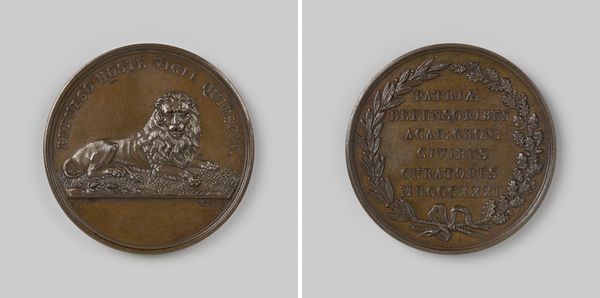
Vijftigjarig bestaan van de Nationale Nederlandsche Huishoudelijke Maatschappij, voorheen de Oeconomische Tak van de Hollandsche Maatschappij der Wetenschappen te Haarlem 1804
0:00
0:00
johangeorgeholtzhey
Rijksmuseum
relief, bronze, sculpture
#
medal
#
neoclacissism
#
relief
#
bronze
#
sculpture
#
history-painting
Dimensions: diameter 4.9 cm, weight 41.32 gr
Copyright: Rijks Museum: Open Domain
Curator: This bronze relief, currently housed in the Rijksmuseum, commemorates the fiftieth anniversary of the Nationale Nederlandsche Huishoudelijke Maatschappij in 1804. It's a medal by Johan George Holtzhey. The piece seems to embody the neoclassical style. What do you think? Editor: It strikes me as rather…optimistic, actually. The imagery feels idealized and evokes a sense of prosperity and societal harmony, doesn't it? There is something undeniably celebratory in the air here. Curator: Absolutely. We should contextualize that. These medals were often commissioned by institutions as public-facing markers of achievement, promoting certain civic virtues. What's fascinating is how institutions used neoclassical symbolism to craft these specific messages. Editor: Right. The choice of a classical aesthetic isn’t accidental; it reinforces the image of rationality and stability they're cultivating. This "Oeconomische Tak" translates roughly to "Economic Branch" - the predecessor of this National Dutch Household company was linked to The Dutch Society of Sciences. Can you elaborate on the symbolism here? Curator: Well, observe the figures on the obverse. You've got a figure placing a laurel wreath upon another who rests beside a beehive. These details tap directly into notions of industry, reward, and collective well-being central to the company's identity. It implicitly links the Maatschappij’s aims with a progressive vision for Dutch society. Note how this vision can be interpreted through a lens of inclusion, specifically by considering women. Editor: And is this reflected in its later activities? Curator: Exactly. Placing it within the context of early 19th century social reforms, specifically with regard to societal contributions that benefited from domestic and gender equality initiatives, we can then analyze how women gained financial awareness and greater financial equality within society and culture through its household practices. The emphasis on this association can provide deeper insights to modern female finance empowerment theories. Editor: I appreciate you drawing that to our attention, viewing this medal then, as not just a static artifact, but a touchstone for considering those emerging gender and power dynamics is invaluable. The piece prompts us to reflect critically on whose interests these celebrations of “prosperity” genuinely served, while acknowledging its progressive intent on women and home. Curator: Yes, history gives us many avenues into this intriguing piece, while your emphasis on a cultural dimension reveals new avenues.
Comments
No comments
Be the first to comment and join the conversation on the ultimate creative platform.
